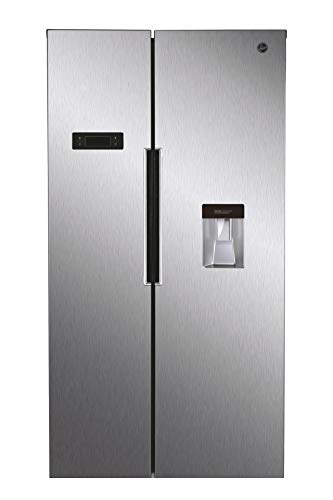Diese Unternehmen hat keine aktiven Jobs
0 Review
Rate This Company ( No reviews yet )
Information Company
- Alle Stellenanzeigen 0 Stellenanzeigen
- Kategorie Engineer
- Full Address Mezendaal 172
Etwas über Unternehmen
Why Fridges And Freezers May Be More Risky Than You Think
Understanding Fridges and Freezers: The Essential Kitchen Appliances
Fridges and freezers are two of the most necessary appliances in modern-day cooking areas. These devices serve an important function in food conservation and waste reduction by ensuring that disposable items stay fresh and safe for intake. This short article explores the numerous types of fridges and freezers, their performances, and crucial considerations for selection and upkeep.
Types of Refrigerators
The market offers a range of refrigerator types, each created to fulfill various customer requirements. Below is a list of the most typical types of fridges:
-
Top-Freezer Refrigerators

- Most typical type.
- Freezer compartment lies above the refrigerator area.
- Normally more budget-friendly and energy-efficient.
-
Bottom-Freezer Refrigerators
- Freezer is situated at the bottom.
- Enables simpler access to fresh items at eye level.
- Often features pull-out drawers for better company.
-
Side-by-Side Refrigerators
- Refrigerator and freezer areas are surrounding.
- Ideal for narrow kitchens and allows simple access to both compartments.
- Frequently includes water and ice dispensers.
-
French Door Refrigerators
- Integrates a bottom freezer with double doors at the top.
- Deals ample storage and stylish designs.
- Typically includes functions like temperature-controlled drawers.
-
Compact Refrigerators
- Smaller size perfect for minimal areas.
- Commonly used in dormitory, studio apartments, or as secondary fridges.
Table 1: Comparison of Refrigerator Types
| Type | Advantages | Downsides | Normal Size |
|---|---|---|---|
| Top-Freezer | Budget-friendly, energy-efficient | Less practical access to the freezer | 14-30 cu. ft. |
| Bottom-Freezer | Much easier access to fresh food | Freezer can be more difficult to organize | 19-30 cu. ft. |
| Side-by-Side | Easy gain access to, water/ice dispenser | Narrow vs. storage area | 22-30 cu. ft. |
| French Door | Trendy, spacious, arranged | More expensive | 20-30+ cu. ft. |
| Compact | Space-saving, portable | Restricted storage | 1.7-5.5 cu. ft. |
Types of Freezers
Freezers are a similarly crucial device for food preservation. They are available in numerous designs designed to fit different home requirements. Consider the list below types:
-
Upright Freezers
- Run like a basic refrigerator with vertical storage.
- Simpler to organize with racks and compartments.
-
Chest Freezers
- Big, horizontal style normally offering more storage space.
- Maintains temperatures much better throughout power blackouts.
- More energy-efficient than upright designs.
-
Portable Freezers
- Compact units ideal for outside activities or small spaces.
- Often used for camping trips or as temporary storage.
Table 2: Comparison of Freezer Types
| Type | Advantages | Downsides | Normal Size |
|---|---|---|---|
| Upright Freezer | Much easier to organize | Less energy-efficient, more flooring area | 5-20 cu. ft. |
| Chest Freezer | Holds more products, energy-efficient | Harder to organize | 5-25 cu. ft. |
| Portable Freezer | Compact and flexible | Restricted storage capability | 1-10 cu. ft. |
Key Features to Consider
When choosing a fridge or freezer, customers need to bear in mind several features that can enhance performance:
- Energy Efficiency: Look for designs with the ENERGY STAR certification to minimize electrical energy bills.
- Storage Capacity: Evaluate storage needs based on family size and eating practices.
- Temperature Control: Some home appliances offer digital controls for exact temperature level settings.
- Adjustable Shelving: Customizable shelving permits optimal organization.
- Water and Ice Dispenser: Offers convenience however can take up important space inside.
- Noise Level: Sound scores can affect convenience, particularly in open-concept homes.
Advantages and disadvantages of Having a Fridge and Freezer
While fridges and freezers are vital innovations, they likewise have specific advantages and downsides:
| Pros | Cons |
|---|---|
| Protect food life expectancy and lower waste | Need routine upkeep |
| Allow bulk purchasing and meal prepping | Can be costly to buy and run |
| Offer benefit and quick access to food | Occupy significant kitchen area area |
Upkeep Tips
To ensure durability and ideal efficiency of fridges and freezers, consider the following upkeep tips:
- Regular Cleaning: Clean the interior and outside regularly to prevent accumulation of dirt and bacteria.
- Check Seals: Inspect door seals frequently for leaks to preserve efficiency.
- Temperature Settings: Keep the fridge at 34-38 ° F and the freezer at 0 ° F for ideal food preservation.
- Defrost as Needed: Chest freezers ought to be thawed routinely to keep effectiveness.
- Clear Air Vents: Ensure that airflow isn’t obstructed to improve energy effectiveness.
Frequently asked questions About Fridges and Freezers
Q1: How long can food be stored in a freezer?A: Most foods can be kept in a freezer for numerous months. Meats and poultry typically last 4-12 months, while veggies can last up to 8-12 months.
Q2: How often must I clean my fridge and freezer?A: It is recommended to clean your fridge and freezer every 3 to 6 months, or as required when spills occur. Q3: Can I put hot food straight in the fridge?A: It is suggested to cool hot food to room temperature before putting it in the fridge to prevent
raising the temperature inside the device. Q4: Why is my fridge running constantly?A: This might be due to a malfunctioning thermostat, clogged up coils, or door seals that aren’t working properly. Fridges and freezers are vital
assets to modern-day households, offering essential services for food storage and conservation.
Understanding the numerous types, functions, and maintenance requirements can help consumers pick the right appliances for their requirements and maximize their functionality. Accepting energy-efficient models not just supports sustainable practices but also contributes to considerable savings on utility costs, making informed options more crucial than ever.

